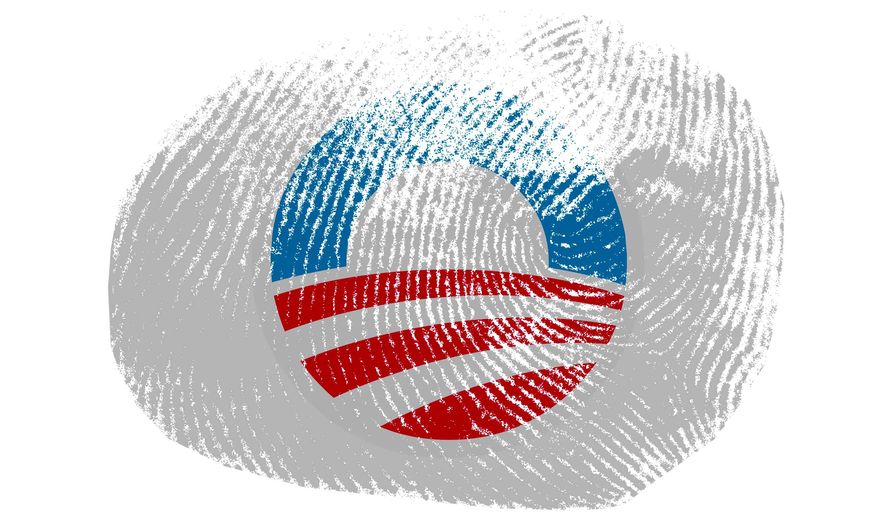Unfettered authority and untraceable secrecy made it possible
The question of whether former President Obama actually spied on President Trump during the 2016 presidential campaign and transition has been tantalizing Washington since President Trump first made the allegation nearly two weeks ago. Since then, three investigations have been launched — one by the FBI, one by the House of Representatives and one by the Senate. Are the investigators chasing a phantom, or did this actually happen?
Here is the back story.
Mr. Obama would not have needed a warrant to authorize surveillance on Mr. Trump. Mr. Obama was the president and as such enjoyed authority under the Foreign Intelligence Surveillance Act (FISA) to order surveillance on any person in America, without suspicion, probable cause or a warrant.
FISA contemplates that the surveillance it authorizes will be for national security purposes, but this is an amorphous phrase and an ambiguous standard that has been the favorite excuse of most modern presidents for extraconstitutional behavior. In the early 1970s, President Richard Nixon used national security as a pretext to deploying the FBI and CIA to spy on students and even to break in to the office of the psychiatrist of Daniel Ellsberg, one of his tormentors.
FISA was enacted in the late 1970s to force the federal government to focus its surveillance activities — its domestic national security-based spying — on only those people who were more likely than not agents of a foreign government. Because FISA authorizes judges on the Foreign Intelligence Surveillance Court to make rules and establish procedures for surveillance — essentially lawmaking — in secret, the public and the media have been largely kept in the dark about the nature and extent of the statute and the legal and moral rationale for the federal government’s spying on everyone in the United States.
The mass spying that these judges have ruled FISA authorizes is directly counter to the wording, meaning and purpose of FISA itself, which was enacted to prevent just what it has in fact now unleashed.
The FISA court only hears lawyers for the government, and they have convinced it that it is more efficient to capture the digital versions of everyone’s phone calls, texts, emails and other digital traffic than it is to force the government — as the Constitution requires — to focus on only those who there is reason to believe are more likely than not engaging in unlawful acts.
When FISA was written, telephone surveillance was a matter of wiretapping — installing a wire onto the target’s telephone line, either inside or outside the home or business, and listening to or recording in real time the conversations that were audible on the tapped line.
Today, the National Security Agency (NSA) has 24/7 access to the mainframe computers of all telecom providers and all computer service providers and to all digital traffic carried by fiber optics in the United States. The NSA has had this access pursuant to FISA court orders issued in 2005 and renewed every 90 days. The FISA court has based its rulings on its own essentially secret convoluted logic, never subjected to public scrutiny. That has resulted in the universal surveillance state in which we in America now live. The NSA has never denied this.
Thus, in 2016, when Mr. Trump says the surveillance of him took place, Mr. Obama needed only to ask the NSA for a transcript of Mr. Trump’s telephone conversations to be prepared from the digital versions that the NSA already possessed. Because the NSA has the digital version of every telephone call made to, from and within the U.S. since 2005, if Mr. Obama last year wanted transcripts of Mr. Trump’s calls made at any time, the NSA would have been duty-bound to provide them, just as it would be required to provide transcripts of Mr. Obama’s calls today if Mr. Trump wanted them.
But if Mr. Obama did order the NSA to prepare transcripts of Mr. Trump’s conversations last fall under the pretext of national security — to find out whether Mr. Trump was communicating with the Russians would have been a good excuse — there would exist somewhere a record of such an order. For that reason, if Mr. Obama did this, he no doubt used a source on which he’d leave no fingerprints.
Enter James Bond.
Sources have told Fox News that the British foreign surveillance service, the Government Communications Headquarters, known as GCHQ, most likely provided Mr. Obama with transcripts of Mr. Trump’s calls. The NSA has given GCHQ full 24/7 access to its computers, so GCHQ — a foreign intelligence agency that, like the NSA, operates outside our constitutional norms — has the digital versions of all electronic communications made in America in 2016, including Mr. Trump‘s. By bypassing all American intelligence services, Mr. Obama would have had access to what he wanted with no Obama administration fingerprints.
Thus, when senior American intelligence officials denied that their agencies knew about this, they were probably being truthful. Adding to this ominous scenario is the fact that three days after Trump’s inauguration, the head of GCHQ, Robert Hannigan, abruptly resigned, stating that he wished to spend more time with his family.
I hope the investigations of Mr. Trump’s allegation discover and reveal the truth — whatever it is. But the lesson here is terribly serious. We face the gravest threat to personal liberty since the Alien and Sedition Acts of 1798 proscribed criticism of the government. We have an unelected, unnamed, unaccountable elite group in the intelligence community manipulating the president at will and possessing intimate, detailed knowledge about all of us that it can reveal. We have statutes that have given the president unconstitutional powers that have apparently been used. And we have judges on secret courts facilitating all this as if the Constitution didn’t exist.
For how much longer will we have freedom?

No comments:
Post a Comment